Enlarge
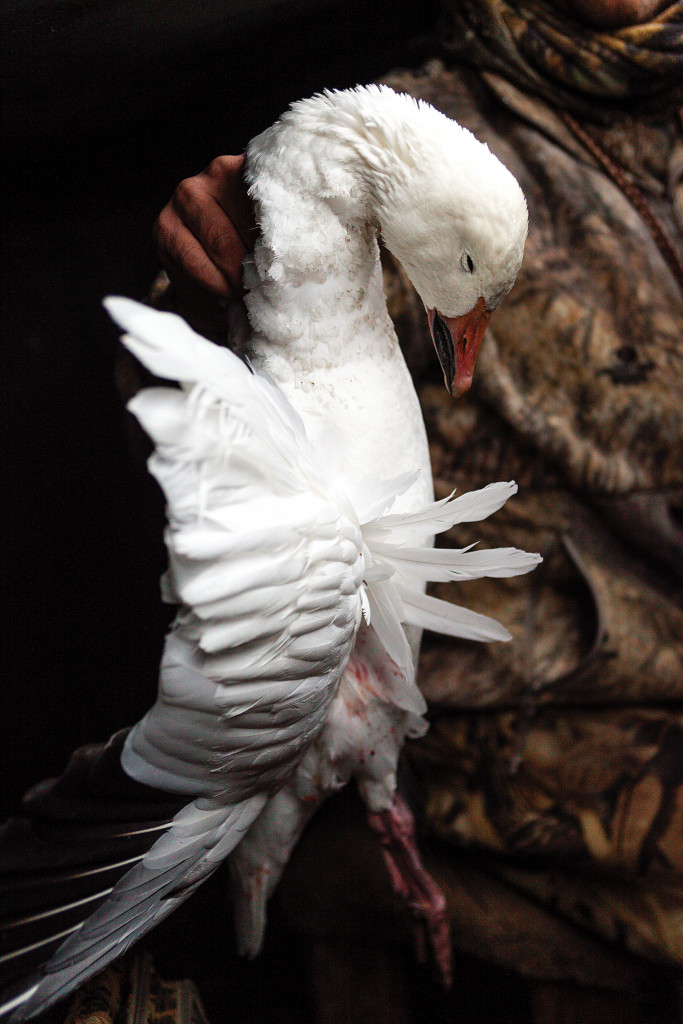
Story by Jenny Nguyen-Wheatley
Hunting the late-waterfowl season is not for the faint of heart. Thick ice, biting temperatures and freezing equipment are only a few things that the most die-hard of waterfowl hunters have to contend with in January and February. I talked to four of these hunters, who provided insight on how to best cope with hunting in harsh winter conditions.
Julie Geiser is a public information officer and Nebraskaland regional editor for the Nebraska Game and Parks Commission. She has spent more than 30 years hunting waterfowl and learning their patterns, calls and how to lure them into a decoy spread throughout the hunting season.
Terry Bisgard of Omaha has been hunting waterfowl for over 35 years. He recalls shooting his first duck at 16 and is now passing on the tradition to his two young sons, Caden and Cody.
Scott Wessel is a Commission private lands biologist out of the Norfolk office. His waterfowl hunting experience began 50 years ago on a small reservoir in northeastern Nebraska. Today, Wessel mostly hunts Sandhill lakes and larger rivers. Although a lot has changed over the years, the anticipation of sunrises in the blind with family, friends and dogs is as great a pull for him today as it was when he was young.
Ross Juelfs has more than 30 years of experience hunting the North Platte River. His guiding career began 25 years ago with his father at the Stanco Ranch near Lisco. Juelfs is currently head guide and hunting manager for Cheyenne Ridge Outfitters near Scottsbluff, where he has worked for
13 years.
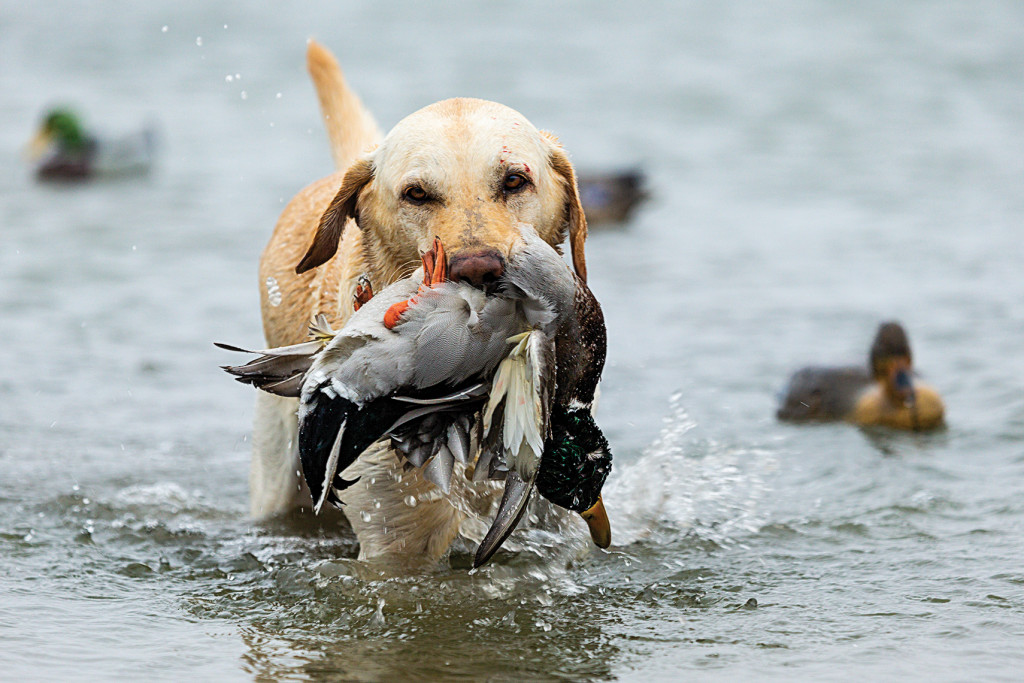
Where to Hunt
Larger bodies of water, sloughs and warm-water creeks are the last to freeze. Public reservoirs, such as Calamus, Merritt and McConaughy, and larger Sandhills lakes in western Nebraska are attractive during the late-waterfowl season for this reason.
“The wind makes the waves bigger on big water, which keeps off the ice,” says Terry Bisgard. “I like to set up on the north to northwest side of a lake because that’s where the birds will be coming in toward the late season.”
Rivers also can produce good hunting, that is until they freeze or form too much slush, says Julie Geiser. “Having said that, if temperatures do warm during the day, river slush melts and will attract ducks and geese during the afternoons,” she says.
Ross Juelfs, who is usually limited to hunting and guiding on smaller bodies of water along the Platte River, looks to small warm-water creeks and sloughs close to food sources.
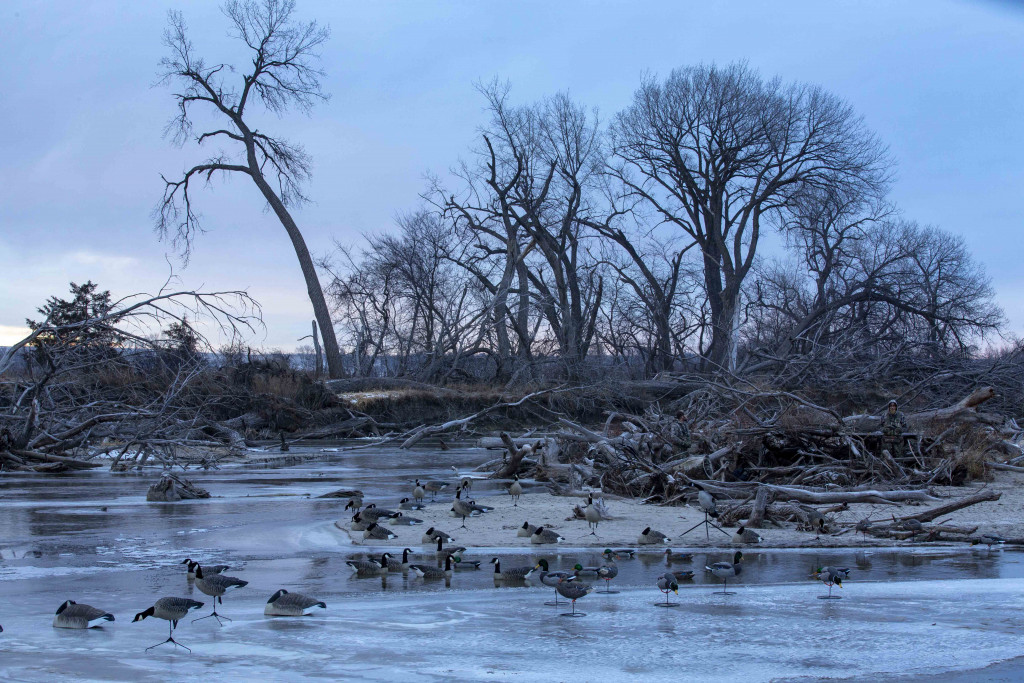
Non-traditional areas include farm ponds and stock dams where ducks wouldn’t normally be found, says Scott Wessel.
“If you can gain access, most people will walk in, flush birds simply by their presence, and then set out decoys and wait for them to return,” he says. “Birds that concentrate in areas like that ‘feel’ secure and will often return and decoy readily.”
Before hunting cornfields, Wessel recommends scouting to look for a field that the birds are using or one that is located along a direct flight line from a roost. Spinning wing decoys and field decoys work well in this case, and camouflaging with a layout blind is important. However, there is one caveat when hunting “roost” sites.
“Hunting roost sites like this is usually a one-and-done affair. Once they’ve been shot at, they won’t likely return soon or at all,” says Wessel. “Furthermore, if there are significant numbers of birds using the site, hunting there may negatively impact other hunter success in the area — particularly for field hunters.”
Calling
Birds will respond to calls differently later in the season than earlier. Geiser’s tactic is to do what they do. Bisgard prefers the minimalist’s route. Juelfs takes a more proactive approach.
“Birds can get educated as the season goes on, and I usually go by how much the ducks or geese are talking, calling as much or as little as they are,” says Geiser. “If you see birds a ways off, call to let them know where you are, and then watch their body language, listen to their calling and mimic them.”
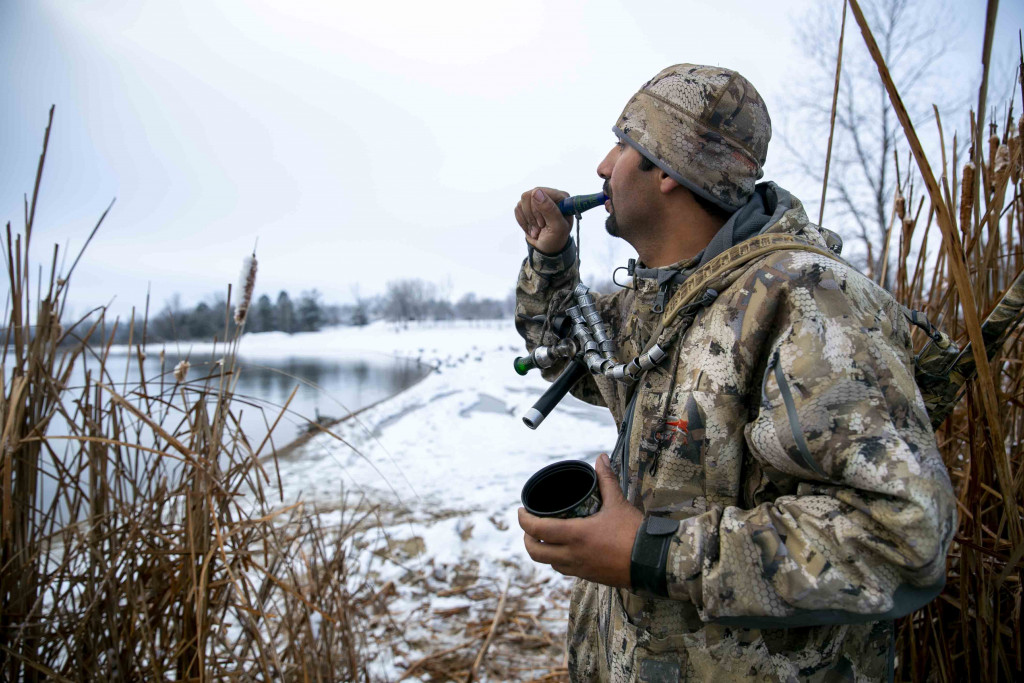
Like Geiser, Bisgard also emphasizes reading the birds, but typically during the late season, he says, “The less calling I do, the better success I usually have. Use soft, low-end type calling, more feed chuckles and maybe soft quacking, because it’s colder and the newer ducks coming in will be hungry. The ducks that are here already are going to be stale, so they’re used to hearing it by then from other hunters. Sometimes I don’t call at all. I just let the motion of the decoys do the work.”
Juelfs tends to call more aggressively later in the season, hoping to trigger a response from a lonely drake mallard.
“Ducks can be very responsive later in the season as they begin their pair bonding and courtship rituals,” he says.
Breaking Ice
Ice is a challenge during the late season. Keeping water open and preventing ice from forming on decoys, which can make them look unnatural, requires a watchful eye.
“Hunting on big reservoirs can be tricky, but if you have a barge, those boats can break through the ice if it’s not too thick,” says Geiser. “Bank hunting can be done near spillways — if legal to hunt there — and other areas with running water that keep the water open. We do have an underwater turbine at our private pond that keeps the water rotating, and it keeps a large area open. We always have heaters running that keep our gear from freezing up.”
“An ice eater works well if you have electricity,” says Wessel. “Open up as big an area as you can upwind of your blind so you can place decoys there and encourage ducks to approach in front of the blind.”
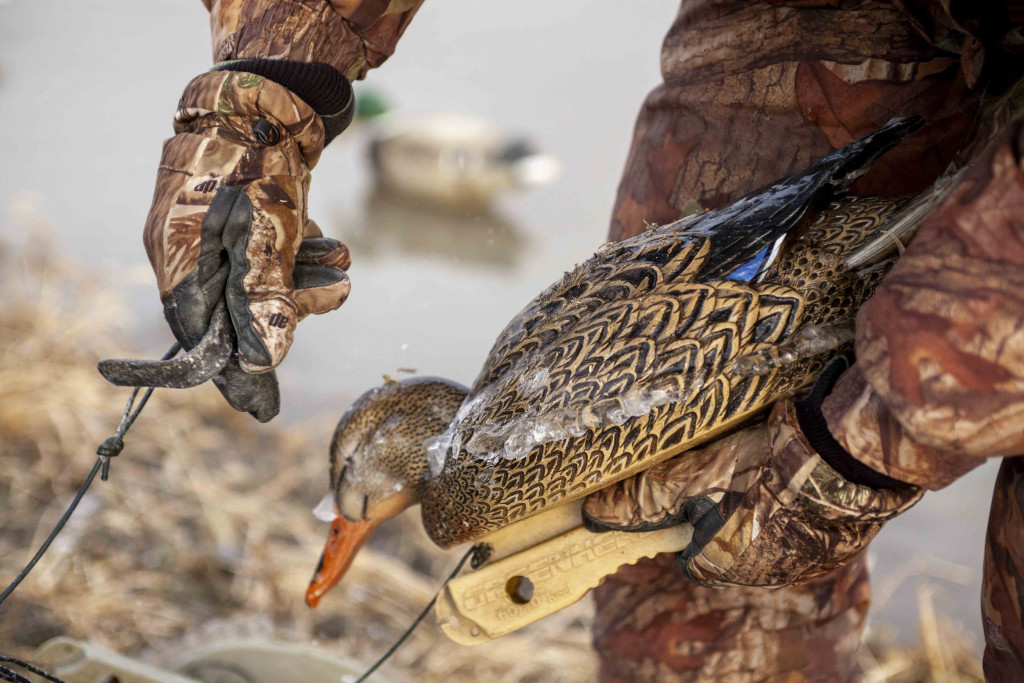
Wessel also uses a spade or spud bar to break ice and move it out of sight, which keeps his hands from getting wet.
“Don’t leave decoys out overnight if there is a risk of icing in or even a heavy frost. Shiny, frozen decoys or those covered with frost don’t look natural,” says Wessel.
Bisgard breaks ice in large circles and slides it underneath the ice.
“It looks more natural. I don’t like shiny broken edges reflecting in the sun,” he says. “If the ice is thick, I’ll only make a small circle. I also set decoys on the ice. I put sleeper or resting decoys around the ice hole, just to make it look more natural and this will also help cover the shiny jagged edges of the ice. When waterfowl see other birds sleeping or resting, it gives them confidence. They’ll see these birds relaxing, and they’ll want to come down.”
Bisgard keeps a close eye for ice forming on decoys. He goes out every couple of hours to clean ice off the decoys’ bills.
Decoys
“For geese during the late season, hunters may need to work the wind more with their decoy spreads,” says Geiser. “Geese will decoy and land coming into the wind.”
If birds are decoy-shy, Geiser suggests moving the decoy spread away from your pit or blind, in a location that would force birds to fly over you as they are looking at your spread.
Also consider competition with other hunters. Wessel utilizes a bigger spread when there are other hunters in the area, “but a few decoys will work if pressure is light.” He also bunches decoys closer together during colder conditions, which simulates natural behavior.
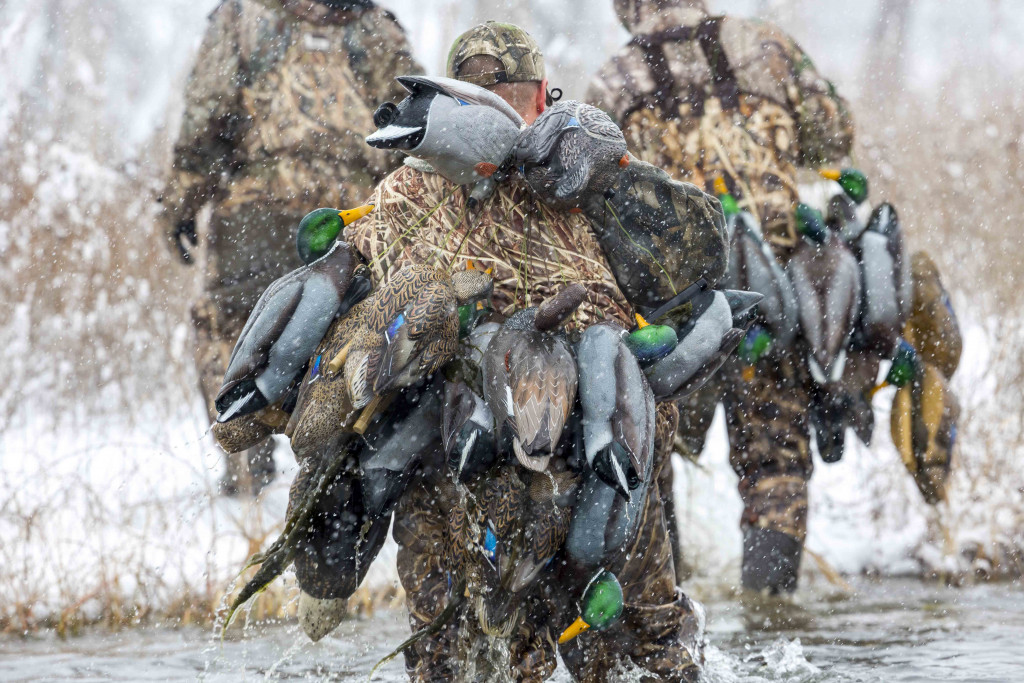
“I always place goose decoys upwind of ducks,” says Wessel. “I believe, but don’t know this for a fact, that geese will fly over ducks but ducks don’t like to fly over geese as they approach a landing site. That was what I read a long time ago in Ralf Coykendall’s book Duck Decoys: And How to Rig Them.”
Wessel also transitions from using a mixed flock of decoys — widgeon, gadwall, pintail, teal and mallards — to mostly mallard and a few green-winged teal later in the season, as most of the early to mid-season migrants have long headed south.
“Honestly, I think I’ve killed just as many ducks over mallard decoys as I do now with really nice ‘other duck decoys,’” says Wessel. Full-body, non-floating duck decoys and
sleeper goose decoys placed on the ice can be effective if you have a way to retrieve downed birds, but be careful of thin ice, he warned.
Bisgard also uses sleeper and resting decoys, especially during conditions of thick ice where you can’t make a big hole.
“If there’s no ice, I’ll add two or three dozen more decoys to my spread to create a bigger profile. I also like motion decoys to create a more natural look,” says Bisgard.
Juelfs, who typically hunts smaller water, tends to run smaller and more realistic spreads later in the season.
“I feel that calling will get a better response than a large decoy spread,” says Juelfs.
Camouflage
Geiser reminds hunters to touch up their blinds and pits toward the middle or end of the waterfowl season. Focus on lids, which birds tend to notice first. Collect corn stalks or other matching vegetation to blend in your blind with its surroundings. However, don’t use phragmites for any blind construction, as the plant is highly invasive, outcompetes native plants and displaces some native animals. Also, don’t make too many paths or tire tracks leading to your blind, she says.
Bisgard gives himself time to scout before hunting. He takes photos of potential hunting spots and studies them to camouflage his boat blind before the hunt.
“If I’m hunting in the Sandhills, I like brush cover. Can’t go wrong with Mossy Oak shadow grass — it’s my favorite,” says Bisgard. “I also put a camo vest on my dog to help break him or her up. Keep the dog still. You don’t want any unwanted motion in your blind.”
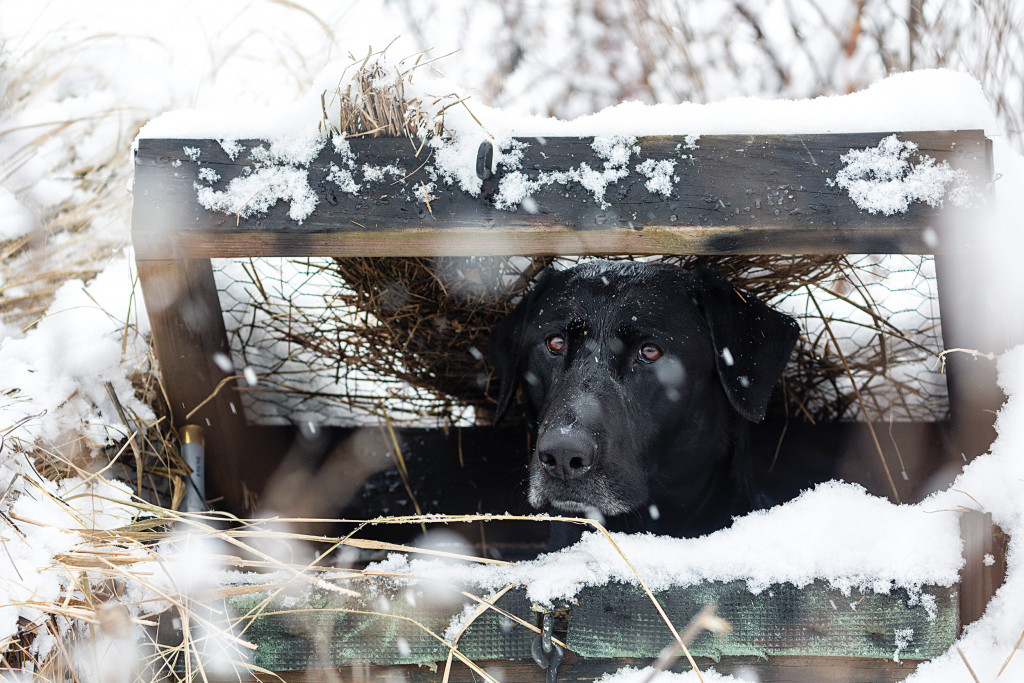
Other Considerations
Although obvious, make sure to wear enough layers and take advantage of hand and foot warmers during the late season. Hypothermia is a real risk. Geiser always checks her hip boots and chest waders for leaks before hunting. Bisgard switches to wearing Cordura waders with 1,600-gram Thinsulate.
“I go for the 4-in-1 jacket — you can always peel off later. You need that protective outer shell to keep the wind, snow and rain out,” says Bisgard. “I have a pair of rubber gloves that go up to my elbows to pick up decoys in cold water. Many hunters make the mistake of choosing gear with a camouflage pattern they like, but it’s only water resistant and not waterproof. Spend the extra money on waterproof gear for when conditions are rough.”
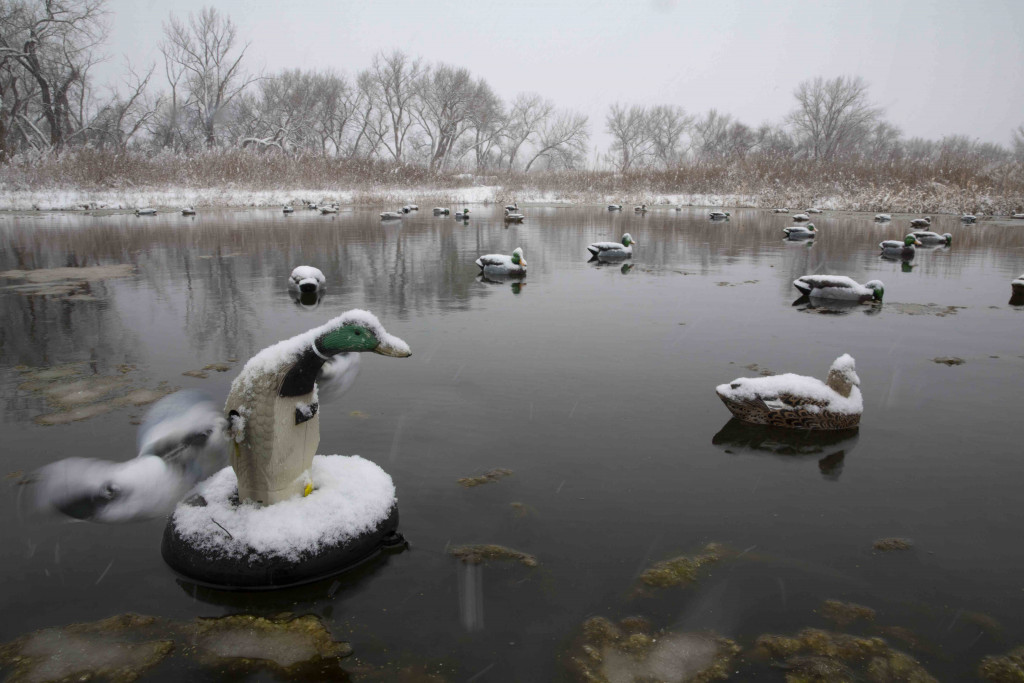
As for the gun, Geiser prefers pump shotguns over semi-auto loaders, which are generally foolproof. Semi-autos can malfunction if they freeze.
Bisgard checks over his gun before hunting, making sure the action is free and working. He warns against over-oiling a gun before hunting in cold weather.
“The oil can get stiff in the cold, and the action won’t work,” he says. “Your gun jamming up is the last thing you want when the birds start come in. For late-season hunting, I only use a light layer of oil when I need to clean my gun.”
Geiser and her husband keep a small hand broom in the pit to dust decoys off if there is frost on them or if it’s snowing.
In extreme weather, bring plenty of food and account for emergency scenarios. ■
Weather and Late-season Waterfowl
By Todd Mills
Nothing can impact a late-season waterfowl hunt like a weather change. When most hunters may be packing away their gear, I’m usually busy checking weather forecasts and looking for that perfect storm that can turn an ordinary late-season hunt into a barrel burner.
During the month of January and early February, most birds have reached their wintering grounds. You’ll no longer be waiting on a migration event, but instead packing on the miles scouting and waiting on the weather to get them out of their daily routine. By this time, they’ve seen it all and heard it all, so every advantage you can get needs to be jumped on. Normally, for me, it’s a drastic weather event that can do that.
Over the course of the 40 years that I have been chasing ducks and geese, the following three tips seem to have paid off the most. Of course, these are late-season waterfowl — so no theory is bullet proof.
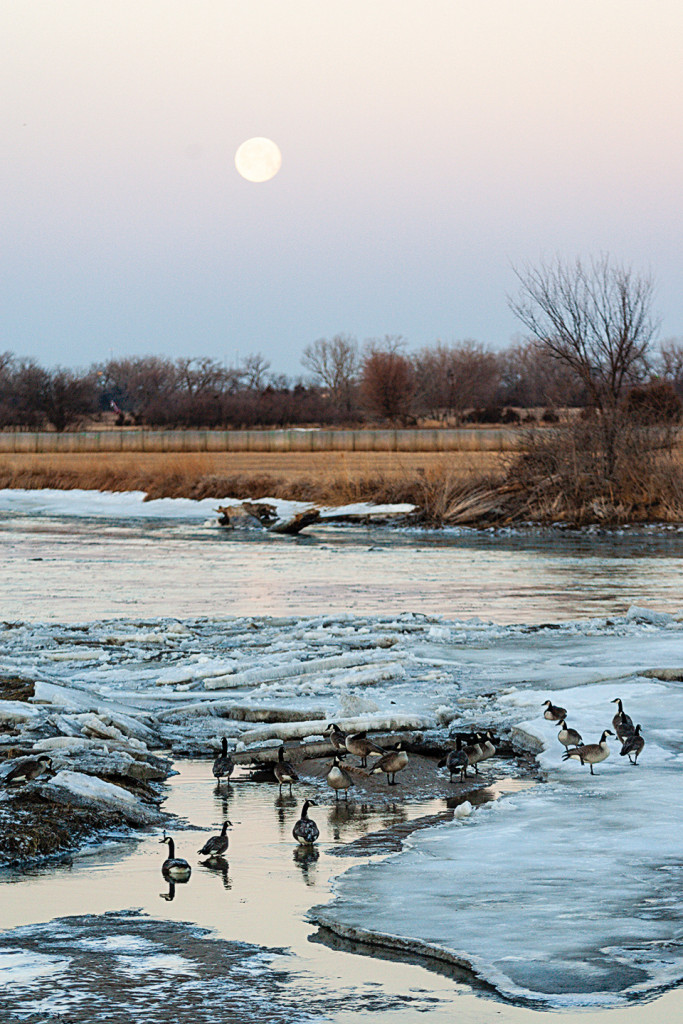
Tip #1 – Nocturnal Blues
When planning a late-season trip, the first thing I’ll look at is the moon phase. Because of pressure, birds will tend to feed by the moon during late season and come out right before sunset. Particularly if it’s cold, they’ll sit most of the day and conserve energy before putting on the food bag. No matter if hunting field or water, birds that go nocturnal are almost impossible to hunt.
Tip #2 – Moisture and Wind
One of the best late-season hunts I had was on the Missouri River right before a snow event and arctic cold blast behind it. The day started with freezing rain and turned to all snow later in the day. In what I would later refer to as “survival mode,” birds were in a frenzy to get food before it was covered up with ice and snow. You could literally stand up in the blind that day and they wouldn’t flinch. Late-season birds can be yarded up in safe havens, so if you find a field they are using nearby and open water in that path, it can be money.
If you’re hunting big water, which is normally the case late in the year for us, wind can be your friend. Birds don’t like to sit in open water with high wind, so they will peel off and head back into coves out of the wind. Note of caution here: Anything over 25 mph is not only dangerous for you, but also shooting birds can be challenging at best. Choose your spot wisely on days like that.
Tip #3 – Southerly Reverse
By late January, birds are anxious to get back to their breeding grounds. A warm up followed by a strong south wind can provide what us waterfowlers like to call a “reverse migration.” With our weather patterns being very mild in the last decade, you can experience this as early as mid-January and as late as February as most goose seasons are still open. Timing is everything here, so watch the weather closely and be ready for some magnificent shooting if you hit it just right.
 Nebraskaland Magazine
Nebraskaland Magazine


